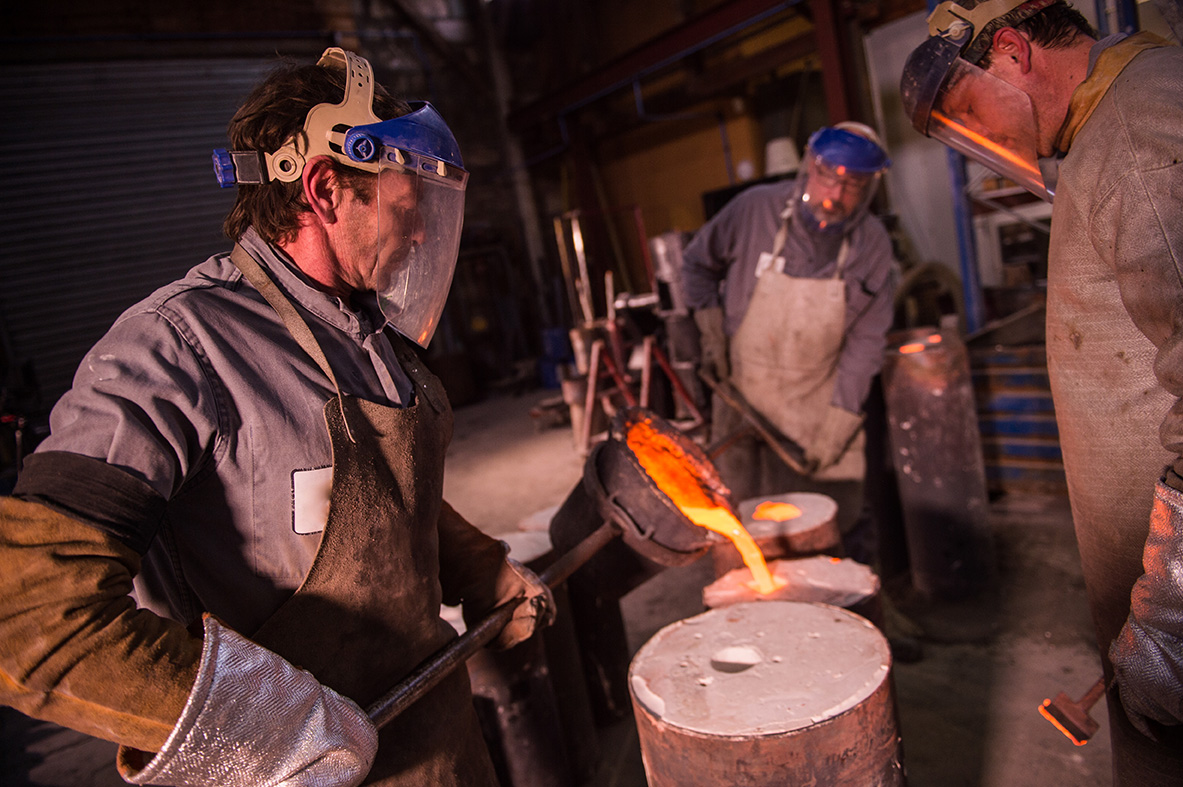When aluminum comes into contact with air, it oxidizes and creates a thin layer of aluminum oxide. Although copper offers a higher level of oxidation resistance, it still reacts with oxygen. The reaction creates copper oxide, which produces a telltale blue-green patina on the metal.
In some cases, the oxide layer weakens the underlying metal, affecting performance and durability. As a result, oxidation management is essential for maintaining the integrity and effectiveness of aluminum and copper alloys. Discover what industry professionals can do to minimize oxidation during the melting process.
What Causes Copper and Aluminum Alloys to Oxidize?
At its core, oxidation is a chemical reaction. When metals are exposed to an environment containing oxygen, they lose electrons to the oxygen molecules. This transfer of electrons is the fundamental process of oxidation.
When it’s exposed to the atmosphere, aluminum begins oxidizing. During the oxidation process, a thin layer of aluminum oxide bonds to the metal’s surface, which gives some alloys a dull gray or powdery white appearance. On pure aluminum at room temperature, the layer of aluminum oxide is only up to ten nanometers thick, but it can provide protection against further oxidation.
Copper is also susceptible to oxidation for the same reason as aluminum. It forms copper oxide, which has a characteristic reddish tint. However, as with aluminum, the oxide layer provides protection against further oxidation.
For both aluminum and copper, higher temperatures increase the rate of oxidation. This is because additional heat speeds up the diffusion of oxygen to a metal’s surface. In a manufacturing context, it’s crucial to properly manage the application of heat to control the nature and rate of oxidation. For example, aluminum’s protective oxide layer can form too quickly at higher temperatures and may be porous, allowing oxygen to penetrate more easily and react with the underlying metal.
Best Practices for Deoxidizing Molten Metals
Deoxidizing molten metals is an important part of metallurgy, especially when producing certain alloys. It can help improve alloy quality, as well as mechanical properties and workability. Some options include:
- Chemical deoxidation: Deoxidizers contain oxygen scavengers, so they reduce the amount of dissolved oxygen in a melted alloy. The type of element used depends on the desired result. Some manufacturers use lithium and boron, while others use silicon and manganese.
- Vacuum Degassing: Another option is to use a specialized vacuum to remove oxygen and other gasses from metal alloys. Removing oxygen from the metal reduces the risk of oxidation, increasing integrity and improving the effectiveness of the metal.
- Fluxing: Fluxes are purifying agents that can be added to molten metals. They bind with impurities like oxides and remove them from the metal. Fluxes can cover the surface of molten metal to prevent oxidation and gather existing oxides for easier removal. Common flux materials include lime and borax.
Reach Out for Expert Deoxidizing Solutions
Oxidation weakens metal alloys, making them susceptible to premature failure. Therefore, managing oxidation is critical for satisfying customers, maintaining safe work environments, and keeping operational costs to a minimum. The experts at Belmont Metals understand how to minimize oxygen during the melting process without deviating from each project’s specifications.
Belmont Metals provides a variety of deoxidizers ready for your next project. Reach out to our team for more information.

